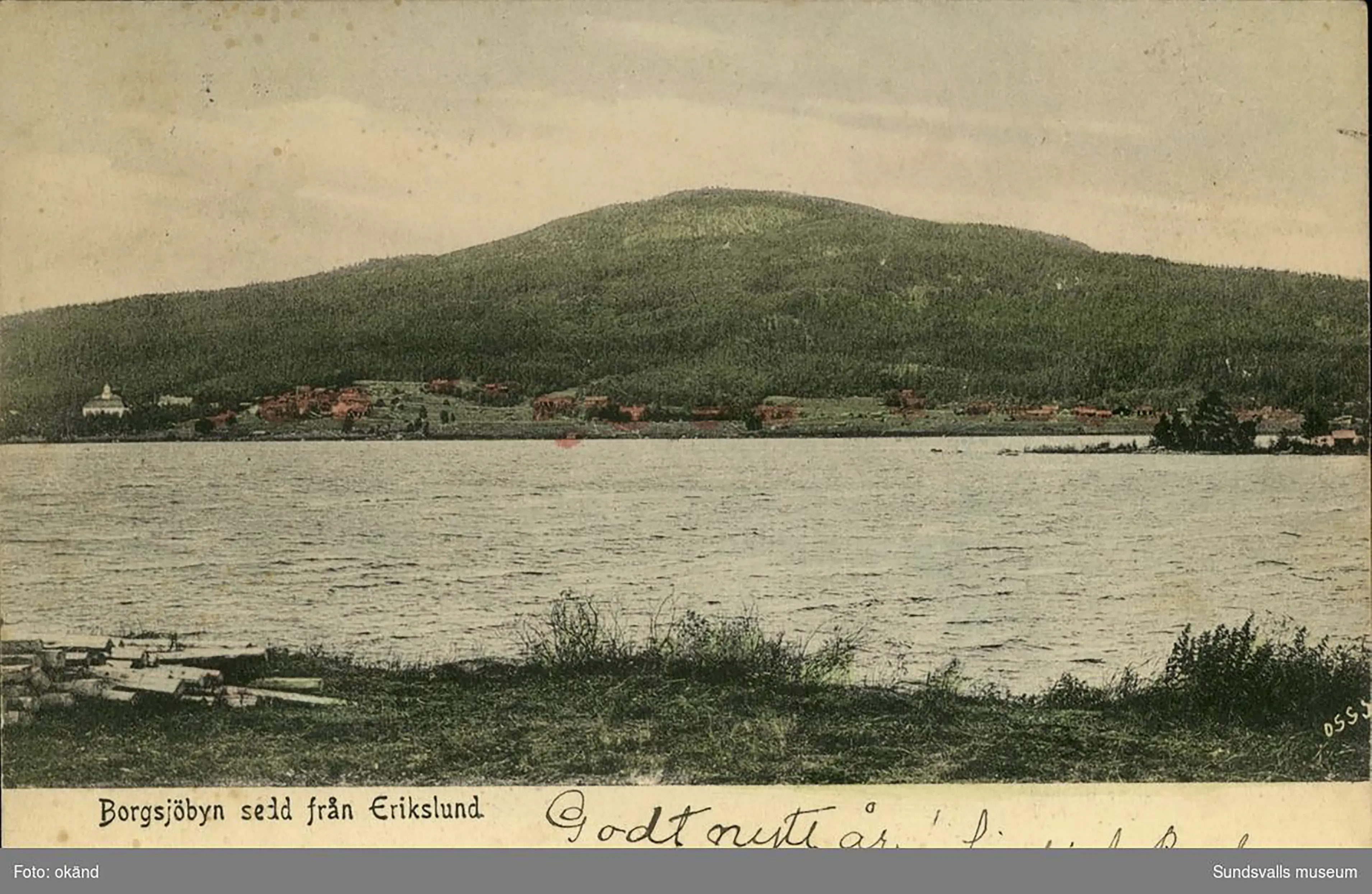The first church in Borgsjö was likely built as early as the 14th century in Borgsjö village, during a time when Borgsjö Parish was its own congregation, with Haverö as an annex. The medieval church was demolished in 1776, and five years later, the current church was completed. The bell tower is called the "king among wooden towers in the Nordic countries."
Northwest of the church is a fortification, consisting of shooting and running trenches, constructed in the 17th century when Borgsjö was a border parish against Norway.
For a long time, agriculture and livestock farming combined with forestry were the dominant industries in Borgsjö. However, in the 1830s, industrialisation began to leave its mark. Initially, businessmen from Sundsvall bought logging rights and entire homesteads, and timber rafting began – transporting the raw material for the "new" export product, sawn timber – on the Ljungan River to the Gulf of Bothnia coast. At the end of the 19th century, the railway arrived, and in 1899, a power station was built in Alby, two events that influenced the development of the parish with the emergence of two urban areas, Ånge and Alby.
Borgsjö village remained the administrative centre of the parish until the 20th century, with a school, church, and warehouse. Northwest of the village lies St. Olaf's Well, where St. Olaf's Trail – the world's northernmost pilgrimage route – passes by. The well is believed to have quenched the thirst of medieval pilgrims on their journey to Nidaros (Trondheim) and St. Olaf's grave.
The original Ånge – Ange – is located in the current Ånge village, a distinctly agricultural village. It was not until 1877, when the main railway line and the cross line joined at a site northeast of Ånge village, that the present town of Ånge was founded. Initially, villas and buildings were erected relatively sparsely and freely around the marshalling yard, and it was only in the 1920s that plans for building in a more urban form were discussed, which took off in earnest after Ånge became a market town in 1946.
From a cultural-historical perspective, Ånge is particularly interesting, with clear annual rings in its building structure, from the large commercial houses of the turn of the century, SJ's staff residences, architect-designed multi-family houses, to more modern villa areas.

